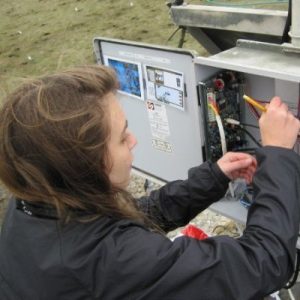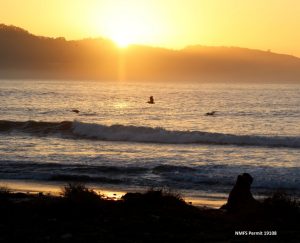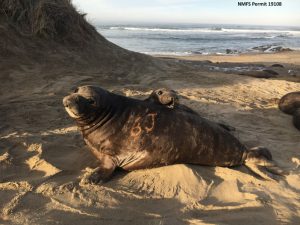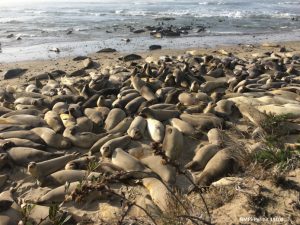Stephanie Schneider

My interest in ecology is broad and I enjoy working with a diversity of organisms, both terrestrial and marine. I began my Master of Science at Moss Landing Marine Laboratory in Fall 2014. As a graduate student, my research has focused on the interrelations between the local prey community, foraging effort and the ability to produce young for Common Murre nesting at Castle Rock National Wildlife Refuge over the last decade. This island is one of the largest seabird breeding colonies in the Pacific Ocean south of Alaska and is in an area of the California Current System where seabirds have rarely been studied.
Since 2009, I have supervised all aspects of seabird research at Castle Rock and have been fortunate enough to focus on an aspect of this larger project for my thesis project. Preliminary analyses show that Castle Rock is unique relative to other breeding colonies in the California Current System; the diet of murres nesting at here differs from other locations and murre behaviors suggest it is challenging to obtain adequate food to raise young. Access to the island is prohibited while seabirds are nesting and, to make detailed observations, I rely on a unique system of remotely operated cameras that are broadcast to the mainland using wireless technologies. You can watch live video of seabirds nesting at Castle Rock 24 hours per day during the breeding season (April to August)
Access to the island is prohibited while seabirds are nesting and, to make detailed observations, I rely on a unique system of remotely operated cameras that are broadcast to the mainland using wireless technologies. You can watch live video of seabirds nesting at Castle Rock 24 hours per day during the breeding season (April to August)
If you want to learn more about seabirds nesting in northern California, including Castle Rock, check out the most recent and comprehensive report ever made for this region. And for an overview of environmental conditions of the California Current System and biological impacts to plankton, fish, and top predators read the most recent State of the California Current report.
Although I have dedicated a majority of my time to Castle Rock over the last decade, I have also assisted with various wildlife projects at Humboldt State University, Humboldt Bay National Wildlife Refuge, and H.T. Harvey & Associates Ecological Consultants.
Stephanie defended her master's thesis titled "Reproductive performance, foraging effort, and diet of an apex predator, the common murre, at one of the largest nesting colonies in the California Current System" in 2018. You can read her thesis manuscript here.




 Two tags are inserted to indicate he has been measured and weighed. Finally, I release the weanling from the bag and estimate percent molt as he galumphs across the sand. Despite what it may seem, the process lasted only ten minutes.
Two tags are inserted to indicate he has been measured and weighed. Finally, I release the weanling from the bag and estimate percent molt as he galumphs across the sand. Despite what it may seem, the process lasted only ten minutes.